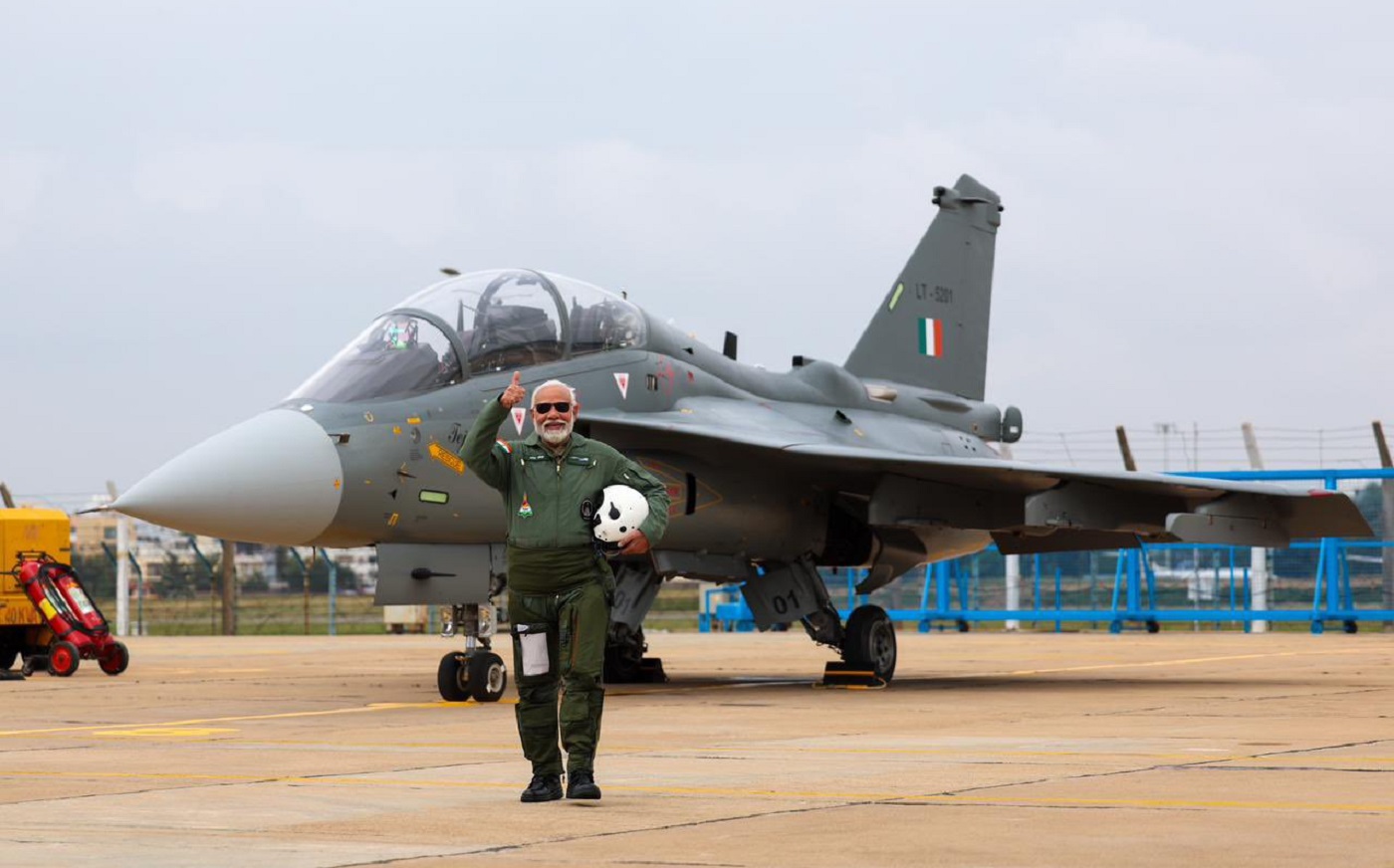Indian Prime Minister Narendra Modi’s recent flight in the LCA Tejas fighter jet marks a significant moment in India’s defense history. Former Indian Presidents Pratibha Patil and Abdul Kalam had previously flown in a Sukhoi Su-30 aircraft. This milestone not only underscores the technological advancements achieved by Hindustan Aeronautics Limited (HAL) but also symbolizes India’s commitment to bolstering its indigenous defense capabilities. Modi’s flight in the Tejas, a testament to its reliability and capabilities, showcases India’s confidence in its homegrown defense technology. The indigenous development of the LCA Tejas represents a pivotal step towards reducing dependency on foreign imports, enhancing self-reliance, and strengthening the country’s defense industry.
The HAL Tejas (Radiance) is an Indian single engine, delta wing, light multirole fighter designed by the Aeronautical Development Agency (ADA) in collaboration with Aircraft Research and Design Centre (ARDC) of Hindustan Aeronautics Limited (HAL) for the Indian Air Force and Indian Navy. It was developed from the Light Combat Aircraft (LCA) programme, which began in the 1980s to replace India’s ageing MiG-21 fighters but later became part of a general fleet modernisation programme. In 2003, the LCA was officially named “Tejas”. It is the smallest and lightest in its class of contemporary supersonic combat aircraft. The Tejas is the second fighter developed by HAL with the intention of attaining supersonic performance, after the HAL HF-24 Marut.

The Defense Acquisition Council’s deliberation on procuring an additional 97 Tejas jets aligns with India’s strategic vision to modernize its air force and replace aging aircraft like the MiG 21. With a total contract for 324 aircraft across various variants, the Tejas project stands as a cornerstone in India’s defense modernization efforts. The IAF’s investment in the LCA Mk-1A variant, equipped with upgraded avionics, advanced radar systems, enhanced electronic warfare capabilities, and beyond visual range missile capabilities, reflects a commitment to staying at the forefront of aerial warfare technology. The aircraft’s anticipated ability to engage targets from extended stand-off ranges further fortifies India’s defensive prowess.
Moreover, the scheduled commencement of deliveries in February 2024 indicates a timely progression in fulfilling the IAF’s requirements. The increased indigenous content in the LCA Mk-1A not only augments India’s technological capabilities but also signifies a boost to the country’s aerospace industry. The existing squadrons of Tejas, namely No 45 Squadron ‘Flying Daggers’ and No 18 Squadron ‘Flying Bullets,’ signify the operational readiness and confidence in the aircraft’s capabilities. Modi’s flight in the Tejas adds a symbolic endorsement from the highest levels of government, reinforcing the credibility and potential of this indigenous fighter jet.















